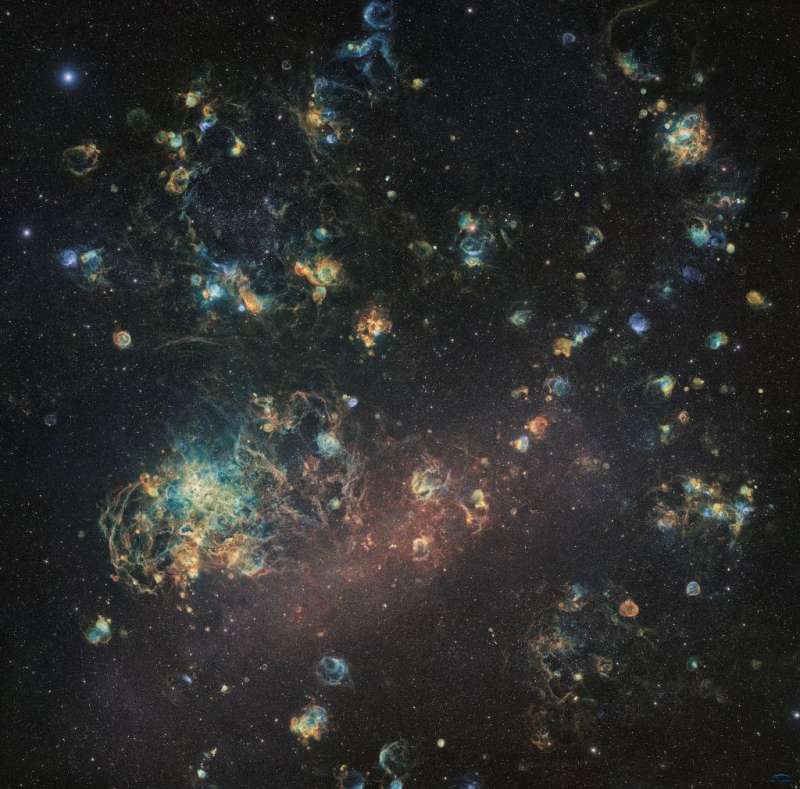Credit & Copyright: Team Ciel Austral -
J. C. Canonne, N. Outters, P. Bernhard, D. Chaplain, L. Bourgon
Explanation:
The Large
Magellanic Cloud (LMC) is an alluring sight in southern skies.
But this
deep and detailed telescopic view, over 10 months in the
making, goes beyond what is visible to most
circumnavigators of planet Earth.
Spanning over 5 degrees or 10 full moons,
the 4x4 panel mosaic was constructed from 3900 frames with a total of
1,060 hours of exposure time in both broadband and narrowband filters.
The narrowband filters are designed to transmit only light
emitted by sulfur, hydrogen, and oxygen atoms.
Ionized by energetic starlight, the atoms emit their
characteristic light as electrons are
recaptured and the atoms transition to a lower energy state.
As a result, in this image the LMC seems covered with
its own clouds of ionized gas
surrounding its massive, young stars.
Sculpted by the strong stellar winds and ultraviolet radiation,
the glowing clouds, dominated by emission from hydrogen, are known as
H II
(ionized hydrogen) regions.
Itself composed of many overlapping H II regions,
the Tarantula Nebula
is the large star forming region at the left.
The largest satellite of our Milky Way Galaxy, the LMC is about
15,000 light-years across and lies a mere 160,000 light-years away
toward the constellation Dorado.
J. C. Canonne, N. Outters, P. Bernhard, D. Chaplain, L. Bourgon
1999 2000 2001 2002 2003 2004 2005 2006 2007 2008 2009 2010 2011 2012 2013 2014 2015 2016 2017 2018 2019 2020 2021 2022 2023 2024 2025 |
Yanvar' Fevral' Mart Aprel' Mai Iyun' Iyul' Avgust Sentyabr' Oktyabr' Noyabr' Dekabr' |
NASA Web Site Statements, Warnings, and Disclaimers
NASA Official: Jay Norris. Specific rights apply.
A service of: LHEA at NASA / GSFC
& Michigan Tech. U.
|
Publikacii s klyuchevymi slovami:
Large Magellanic Cloud - Bol'shoe Magellanovo Oblako
Publikacii so slovami: Large Magellanic Cloud - Bol'shoe Magellanovo Oblako | |
Sm. takzhe:
Vse publikacii na tu zhe temu >> | |
